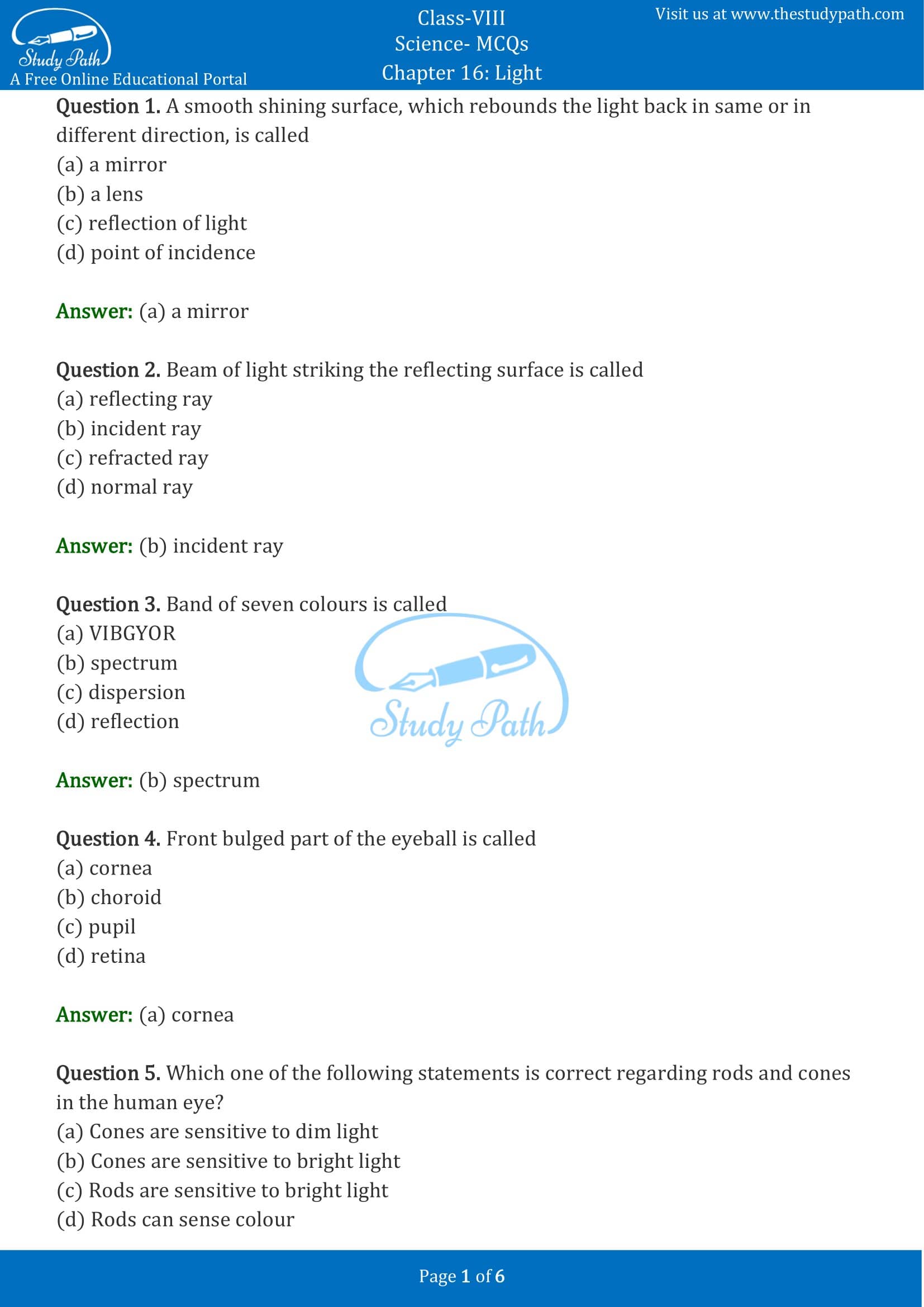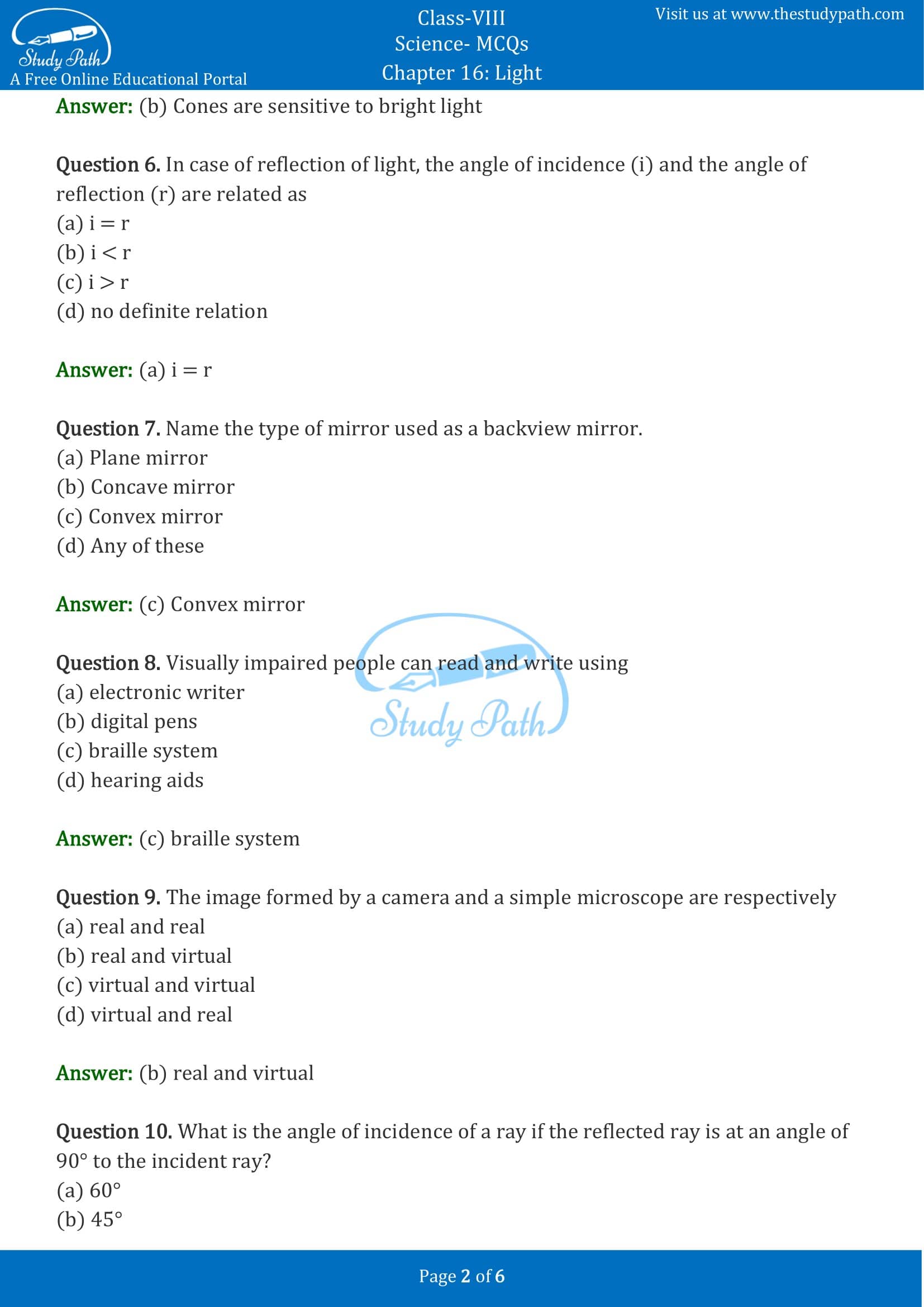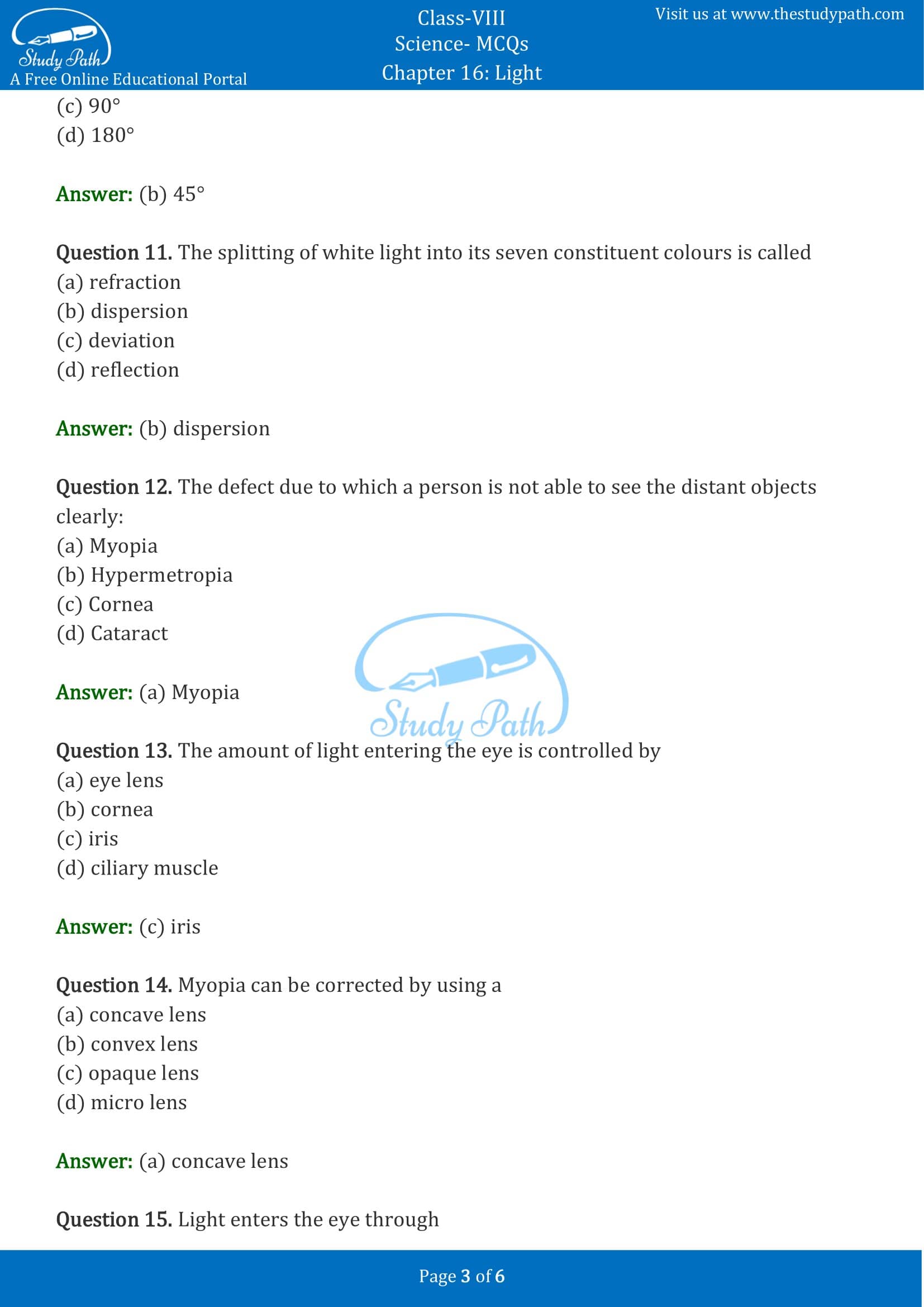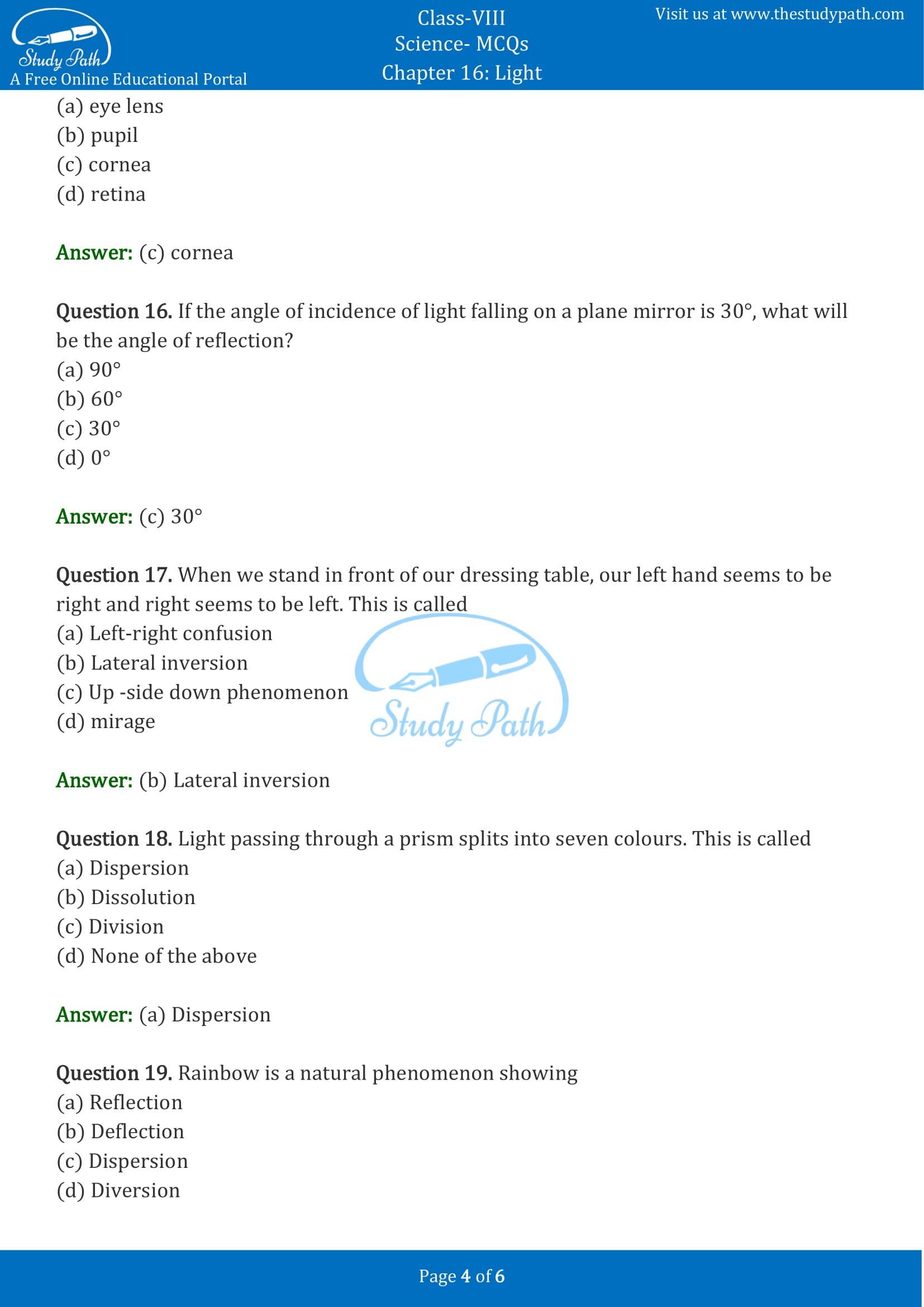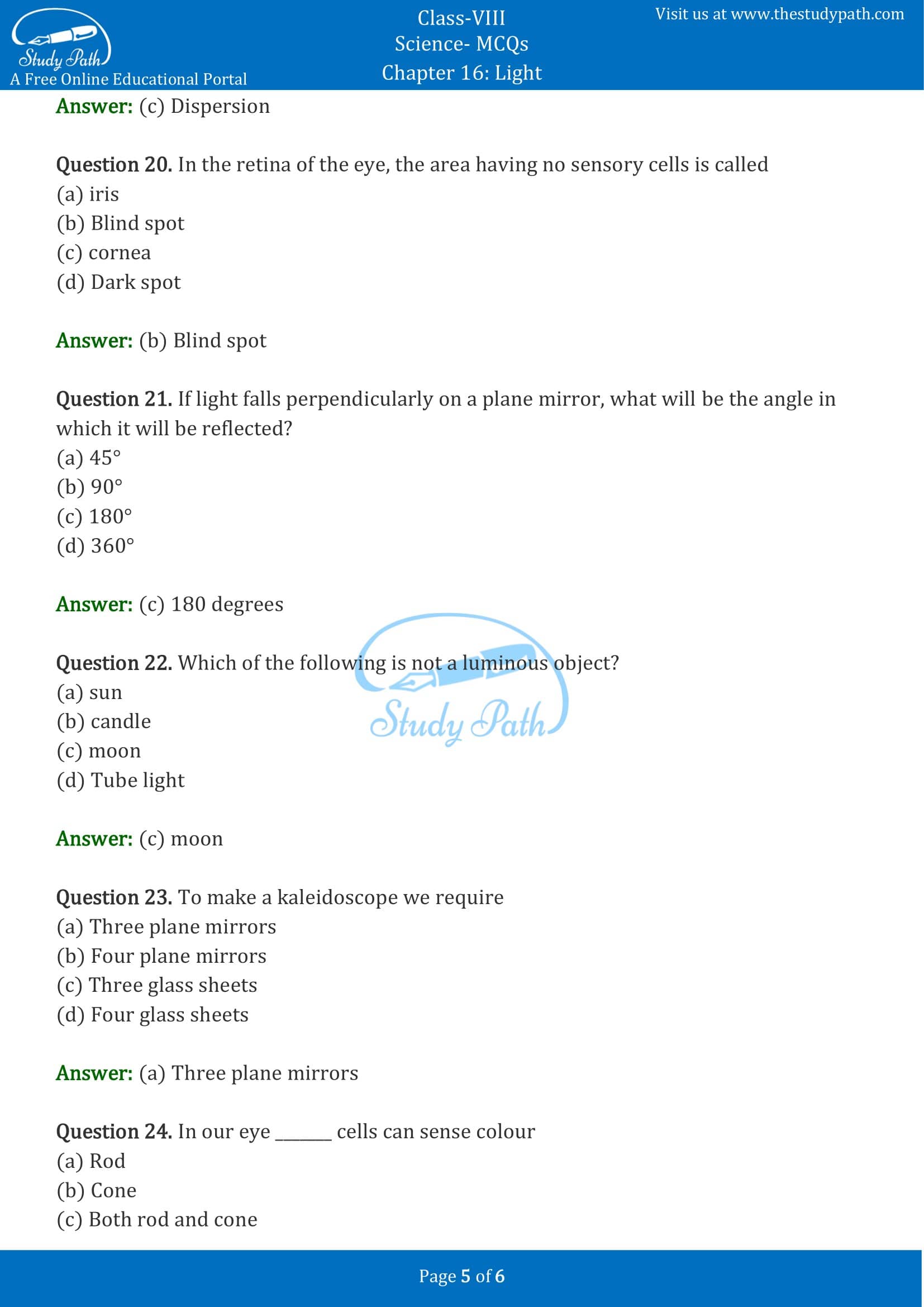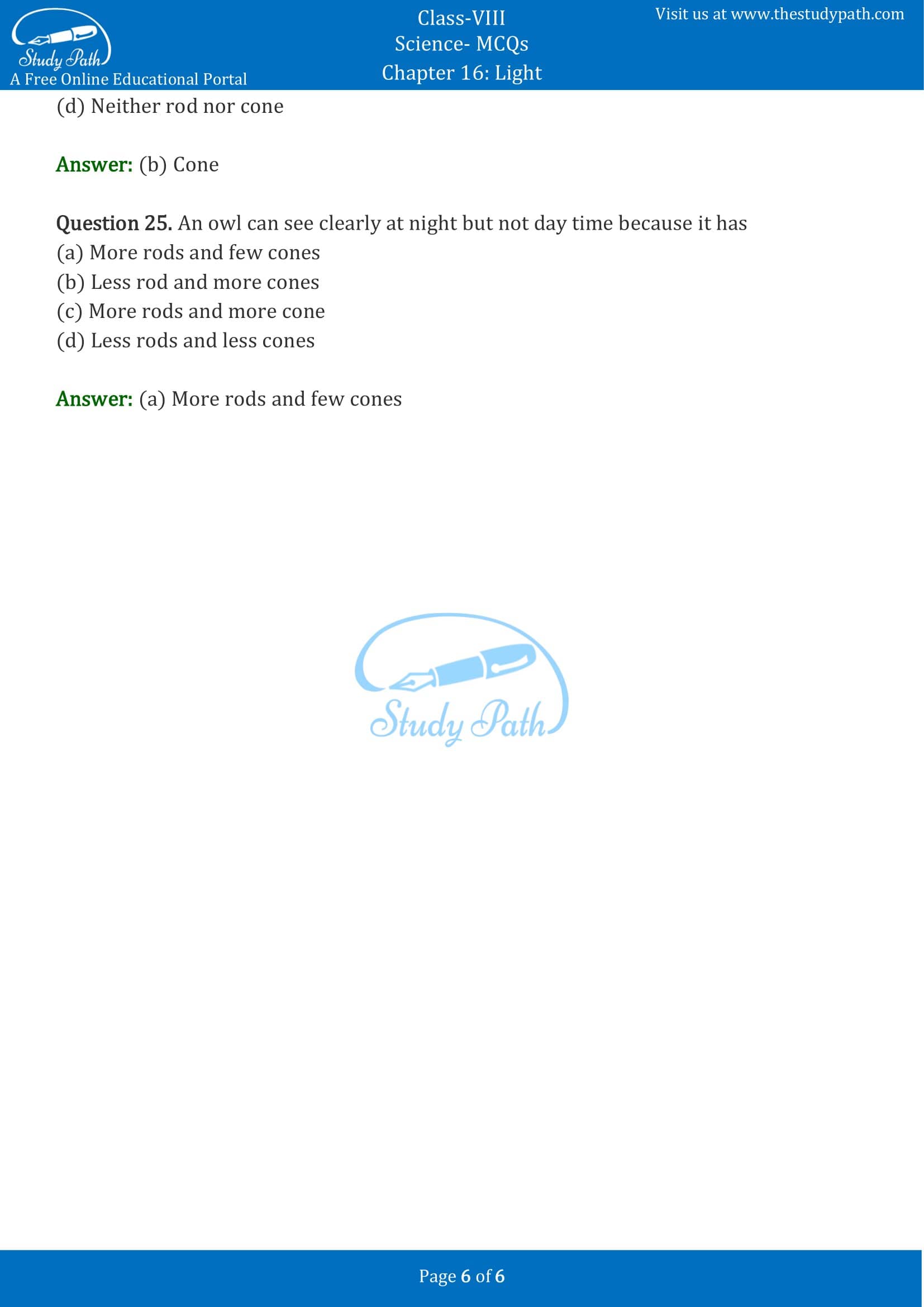Class 8 Science Chapter 16 Light MCQ with Answers
Class 8 Science Chapter 16 Light MCQ (Multiple Choice Questions) with Answers is available here in PDF format. CBSE Class 8 Science Light Objective Questions helps the students to understand the concepts thoroughly and to score good marks. Practising these MCQs will help you to answer every question that is being asked in the exams.
At Study Path, you can download PDF of Multiple Choice Questions for Class 8 Chapter 16 Light with Answers. We prepared these MCQs on the basis latest exam Pattern. Students can solve NCERT Class 8 Science Light MCQs before the exam to know their preparation level.
Class 8 Science Chapter 16 Light MCQ with Answers
Multiple Choice Questions (MCQs)
Question 1. A smooth shining surface, which rebounds the light back in same or in different direction, is called
(a) a mirror
(b) a lens
(c) reflection of light
(d) point of incidence
Answer: (a) a mirror
Question 2. Beam of light striking the reflecting surface is called
(a) reflecting ray
(b) incident ray
(c) refracted ray
(d) normal ray
Answer: (b) incident ray
Question 3. Band of seven colours is called
(a) VIBGYOR
(b) spectrum
(c) dispersion
(d) reflection
Answer: (b) spectrum
Question 4. Front bulged part of the eyeball is called
(a) cornea
(b) choroid
(c) pupil
(d) retina
Answer: (a) cornea
Question 5. Which one of the following statements is correct regarding rods and cones in the human eye?
(a) Cones are sensitive to dim light
(b) Cones are sensitive to bright light
(c) Rods are sensitive to bright light
(d) Rods can sense colour
Answer: (b) Cones are sensitive to bright light
Question 6. In case of reflection of light, the angle of incidence (i) and the angle of reflection (r) are related as
(a) i = r
(b) i < r
(c) i > r
(d) no definite relation
Answer: (a) i = r
Question 7. Name the type of mirror used as a backview mirror.
(a) Plane mirror
(b) Concave mirror
(c) Convex mirror
(d) Any of these
Answer: (c) Convex mirror
Question 8. Visually impaired people can read and write using
(a) electronic writer
(b) digital pens
(c) braille system
(d) hearing aids
Answer: (c) braille system
Question 9. The image formed by a camera and a simple microscope are respectively
(a) real and real
(b) real and virtual
(c) virtual and virtual
(d) virtual and real
Answer: (b) real and virtual
Question 10. What is the angle of incidence of a ray if the reflected ray is at an angle of 90° to the incident ray?
(a) 60°
(b) 45°
(c) 90°
(d) 180°
Answer: (b) 45°
Question 11. The splitting of white light into its seven constituent colours is called
(a) refraction
(b) dispersion
(c) deviation
(d) reflection
Answer: (b) dispersion
Question 12. The defect due to which a person is not able to see the distant objects clearly:
(a) Myopia
(b) Hypermetropia
(c) Cornea
(d) Cataract
Answer: (a) Myopia
Question 13. The amount of light entering the eye is controlled by
(a) eye lens
(b) cornea
(c) iris
(d) ciliary muscle
Answer: (c) iris
Question 14. Myopia can be corrected by using a
(a) concave lens
(b) convex lens
(c) opaque lens
(d) micro lens
Answer: (a) concave lens
Question 15. Light enters the eye through
(a) eye lens
(b) pupil
(c) cornea
(d) retina
Answer: (c) cornea
Question 16. If the angle of incidence of light falling on a plane mirror is 30°, what will be the angle of reflection?
(a) 90°
(b) 60°
(c) 30°
(d) 0°
Answer: (c) 30°
Question 17. When we stand in front of our dressing table, our left hand seems to be right and right seems to be left. This is called
(a) Left-right confusion
(b) Lateral inversion
(c) Up -side down phenomenon
(d) mirage
Answer: (b) Lateral inversion
Question 18. Light passing through a prism splits into seven colours. This is called
(a) Dispersion
(b) Dissolution
(c) Division
(d) None of the above
Answer: (a) Dispersion
Question 19. Rainbow is a natural phenomenon showing
(a) Reflection
(b) Deflection
(c) Dispersion
(d) Diversion
Answer: (c) Dispersion
Question 20. In the retina of the eye, the area having no sensory cells is called
(a) iris
(b) Blind spot
(c) cornea
(d) Dark spot
Answer: (b) Blind spot
Question 21. If light falls perpendicularly on a plane mirror, what will be the angle in which it will be reflected?
(a) 45°
(b) 90°
(c) 180°
(d) 360°
Answer: (c) 180 degrees
Question 22. Which of the following is not a luminous object?
(a) sun
(b) candle
(c) moon
(d) Tube light
Answer: (c) moon
Question 23. To make a kaleidoscope we require
(a) Three plane mirrors
(b) Four plane mirrors
(c) Three glass sheets
(d) Four glass sheets
Answer: (a) Three plane mirrors
Question 24. In our eye _______ cells can sense colour
(a) Rod
(b) Cone
(c) Both rod and cone
(d) Neither rod nor cone
Answer: (b) Cone
Question 25. An owl can see clearly at night but not day time because it has
(a) More rods and few cones
(b) Less rod and more cones
(c) More rods and more cone
(d) Less rods and less cones
Answer: (a) More rods and few cones
At Study Path, you can also learn more about science chapter 16 Light by accessing the free exhaustive list of study materials and resources related to the chapter such as NCERT Solutions, Important Questions and Extra Questions.
